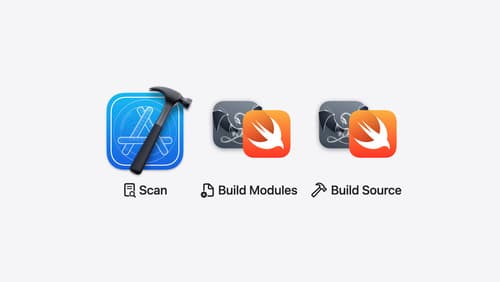mergeable libraries
Asked on 2024-09-10
1 search
The concept of "mergeable libraries" isn't directly mentioned in the provided context from the WWDC sessions. However, the context does discuss related topics such as Swift packages, modules, and access control, which are relevant to how libraries and code organization are managed in Swift.
For example, in the session titled "A Swift Tour: Explore Swift’s features and design," it is explained how modules can be organized into packages, and how access control levels like public, private, and internal can be used to manage visibility and dependencies between different parts of a Swift project. This is crucial for creating libraries that can be reused and integrated into other projects.
If you are interested in how Swift handles modules and packages, you might want to check out the session A Swift Tour: Explore Swift’s features and design (09:47) which covers code organization and the use of Swift packages.
If you have more specific questions about Swift libraries or modules, feel free to ask!

Demystify explicitly built modules
Explore how builds are changing in Xcode 16 with explicitly built modules. Discover how modules are used to build your code, how explicitly built modules improve transparency in compilation tasks, and how you can optimize your build by sharing modules across targets.

A Swift Tour: Explore Swift’s features and design
Learn the essential features and design philosophy of the Swift programming language. We’ll explore how to model data, handle errors, use protocols, write concurrent code, and more while building up a Swift package that has a library, an HTTP server, and a command line client. Whether you’re just beginning your Swift journey or have been with us from the start, this talk will help you get the most out of the language.

Consume noncopyable types in Swift
Get started with noncopyable types in Swift. Discover what copying means in Swift, when you might want to use a noncopyable type, and how value ownership lets you state your intentions clearly.
